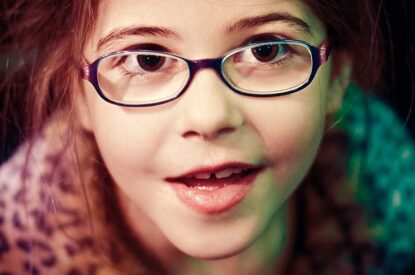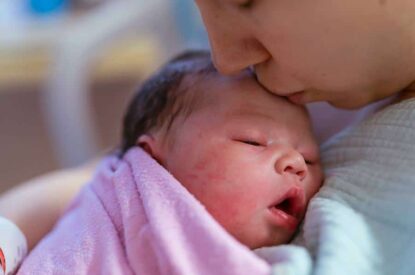Congenital Glaucoma
Childhood glaucoma occurs in one out of every 10,000 births in the United States. In most cases, childhood glaucoma is diagnosed by the age of six months, with 80% diagnosed in the first year of life.
Video: Congenital Glaucoma
This brief video provides an overview of congenital glaucoma.
What are the types of childhood glaucoma?
Childhood glaucoma resulting from abnormal development of the eye’s aqueous outflow system is often categorized based on the age of onset. Primary Congenital Glaucoma develops from birth to 3 years of age and Juvenile open-angle glaucoma develops after age 3.
Childhood glaucoma may also result from secondary causes such as eye trauma, and inflammation, or may develop following cataract removal, or following treatment with steroids.
How do I know if my child has glaucoma?
Children with Primary Congenital Glaucoma are most often diagnosed within the first year of life. Signs to look for include excessive tearing, large eyes, cloudy corneas, hiding from bright light, and squeezing the eyelids. It is often first noticed when an acquaintance is shown photographs and they comment on very large-appearing eyes.
Older children with Juvenile glaucoma are typically asymptomatic like adults but may be able to describe their ocular discomfort related to an underlying condition causing the glaucoma. Symptoms and signs to look for include sensitivity to light, vision loss, problems adjusting to the dark, head or eye pain, and consistently red eyes.
What should I do if I think my child may have glaucoma?
The key to successful preservation of your child’s vision is early diagnosis and treatment. Parents should take their child to an ophthalmologist (pediatric ophthalmologist if available) if they notice the above symptoms/signs or if there is any reason to suspect that something might be wrong with their child’s eyes. Timely diagnosis and appropriate care offer the best chances of preventing vision loss.
How is Childhood Glaucoma Treated?
Treatments for childhood glaucoma include medications and surgery. Regular follow-up is essential. With timely and ongoing care, many children go on to live normal lives with good vision.
Medications
Medical treatments may involve the use of topical eye drops and oral medications. These treatments help to either increase the exit of fluid from the eye or decrease the production of fluid inside the eye. Each results in lower eye pressure.
Surgery
There are two main types of surgical treatments: filtering surgery and laser surgery. Filtering surgery (also known as microsurgery) involves the use of small surgical tools to create a drainage canal in the eye. In contrast, laser surgery uses a small but powerful beam of light to make a small opening in the eye tissue.
What to Expect
Thousands of children with glaucoma can live full lives. This is the goal of glaucoma management. Although lost vision cannot be restored, it is possible to optimize each child’s remaining vision. Equally important is to encourage your child’s independence and participation in his or her own self-care.
Download a PDF of the booklet “Childhood Glaucoma”— a free reference guide for parents and professionals involved in the care of children with glaucoma.
Learn More



